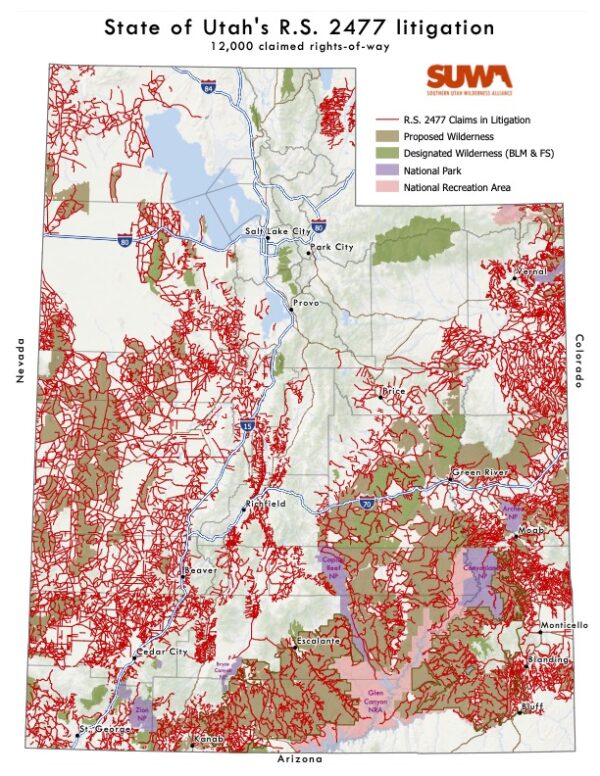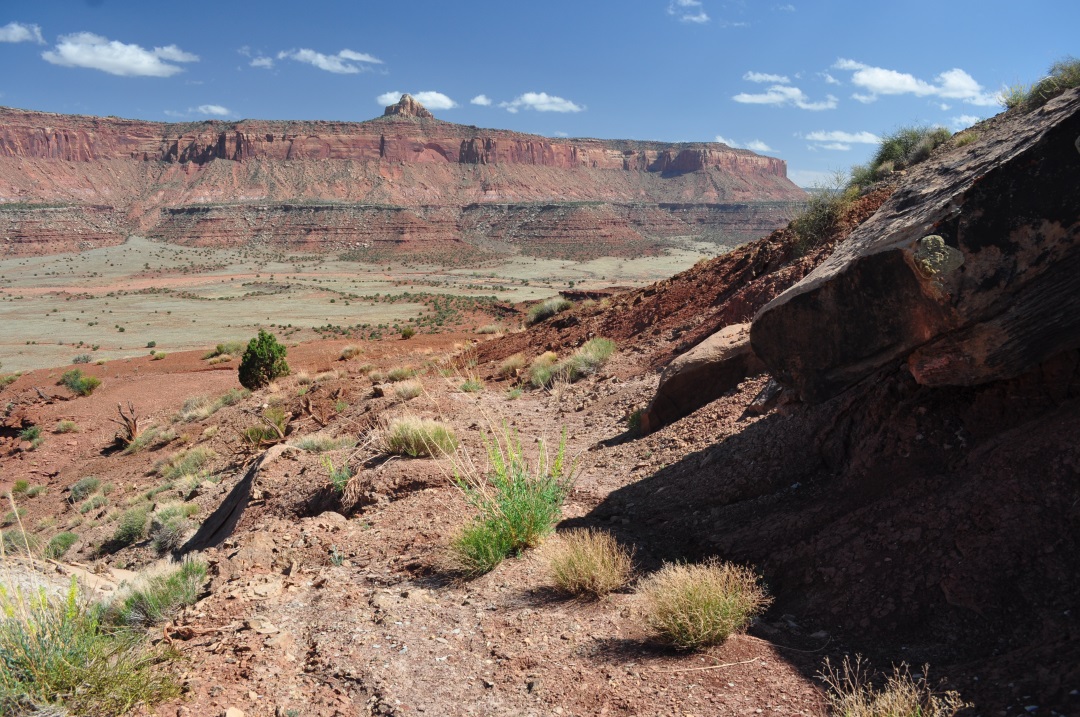 RS 2477 claims in Utah cross a myriad of federal lands, including BLM, National Park Service, U.S. Forest Service, and U.S. Fish and Wildlife Service-managed lands, as well as private and state lands. The lawsuits assert claims within some of the state’s wildest places including more than 2,068 miles of routes within the Grand Staircase-Escalante National Monument, 1,410 miles within the Bears Ears National Monument (as established by President Obama), 152 miles within national parks, and 4,660 miles within proposed wilderness areas.
RS 2477 claims in Utah cross a myriad of federal lands, including BLM, National Park Service, U.S. Forest Service, and U.S. Fish and Wildlife Service-managed lands, as well as private and state lands. The lawsuits assert claims within some of the state’s wildest places including more than 2,068 miles of routes within the Grand Staircase-Escalante National Monument, 1,410 miles within the Bears Ears National Monument (as established by President Obama), 152 miles within national parks, and 4,660 miles within proposed wilderness areas.
And let’s be clear: the overwhelming majority of these routes are not highways vital to public transportation needs and leading to schools, stores, or towns. Rather, they are wash bottoms, cow paths, and two-tracks in the desert, which the state and counties seek to improve (by paving, for example) and widen up to sixty-six feet—about as wide as ten passenger cars.
If the courts accept Utah’s argument that these RS 2477 claims are actually “highways” under this antiquated law, it would nullify or diminish longstanding protection for national parks, national monuments, wilderness areas and other scenic landscapes. And it would slam the door on future protection of these remarkable public lands.
What’s the real motive behind this massive litigation? It is part of Utah politicians’ ongoing effort to seize federal land from the American public—in essence, to block the protection of these magnificent public lands and turn them over to extractive industries, off-road vehicles, and developers.
SUWA is defending against the state and counties’ RS 2477 claims on a number of fronts. We’ve intervened in the statewide litigation, which allows SUWA attorneys to defend against the thousands of claims that threaten proposed wilderness and other wild lands. For nearly a decade now, the state and counties have taken deposition testimony from hundreds of witnesses who purport to remember which routes they traveled, how often, and for what purpose, prior to the repeal of FLPMA. And the state and counties are continuing this expensive and tardy attempt to collect evidence they hope will support their claims, with no end in sight.
The federal judges overseeing the cases ordered a “bellwether” trial of a small subset of routes to resolve some of the many unanswered legal questions surrounding how an RS 2477 was validly established and the extent of the rights it conferred. Although the bellwether trial, involving 15 claims in Kane County, took place over a three-week period in February 2020, the district court has yet to hear closing arguments.
SUWA attorneys have been traveling across the state to attend the depositions and are fighting for a meaningful seat in the courtroom to defend against the claims and build good law in the bellwether trial.

Collectively, the state and counties’ RS 2477 cases represents one of the largest, if not the largest lawsuit ever brought by the State of Utah. And the cases pose one of the greatest threats to wilderness in Utah. SUWA’s ability to defend against these thousands of claims would not be possible without an all-star team of pro-bono and “low-bono” attorneys from a number of elite law firms: Manning Curtis Bradshaw & Bednar, Kirkland & Ellis, Cooley LLP, and Strindberg & Scholnick.

